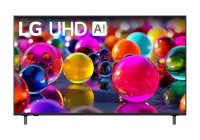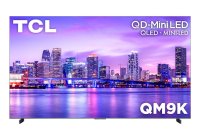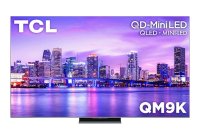How to Pick the Best TV for You?
Choosing a new TV can feel overwhelming with the sheer number of options available. From different screen sizes and resolutions to smart features and price points, making the right decision requires a bit of research. This guide will walk you through the essential factors to consider when picking the best TV for your needs.
1.Determine Your Budget:
Before diving into technical specs, it's crucial to set a budget. TVs come in a wide range of prices, and understanding your financial limits will help narrow down your options. Whether you're looking for a high-end model with all the bells and whistles or a more affordable option, there's a TV out there for every budget.
2.Choose the Right Screen Size
The size of your TV should be proportional to the room where you'll be watching it. Measure the distance between your seating area and where the TV will be placed. As a general rule, the best viewing distance is about 1.5 to 2.5 times the diagonal screen size of the TV. For smaller spaces, a 32-43 inch TV might be ideal, while larger rooms might benefit from a 55-inch or bigger screen.
3.Understand Resolution: HD, 4K, or 8K?
Resolution refers to the number of pixels on the screen. The more pixels, the sharper the image. While Full HD (1080p) is still common, 4K TVs (Ultra HD) have become the new standard, offering four times the resolution of HD. If you're after the highest possible clarity and plan to future-proof your purchase, consider an 8K TV, though 4K content is much more widely available at this time.
4.Refresh Rate: 60Hz vs 120Hz
Refresh rate, measured in Hertz (Hz), indicates how many times per second the image on the screen is refreshed. A 60Hz TV is sufficient for most viewers, but if you’re into fast-paced sports or gaming, a 120Hz TV can offer smoother motion and reduce blur.
5.Smart Features and Operating System
Modern TVs come with smart features that allow you to stream content directly from platforms like Netflix, Hulu, or Disney+. Consider the TV's operating system (OS) as well. Popular options include Roku TV, Amazon Fire TV, Android TV, and proprietary systems like LG’s webOS or Samsung’s Tizen. Ensure the interface is user-friendly and supports the apps you use regularly.
6.Check the Ports
The number and types of ports on a TV are often overlooked but are important depending on how you plan to use your TV. Make sure there are enough HDMI ports for your devices (gaming consoles, Blu-ray players, soundbars, etc.), and consider if you need USB ports, Ethernet, or optical audio outputs.
7.Consider Audio Quality
While picture quality is often the main focus, don't overlook sound. Many modern TVs are ultra-thin, leaving little room for high-quality built-in speakers. If you value good audio, consider investing in a soundbar or home theater system. Some TVs also support advanced audio formats like Dolby Atmos, which can enhance your viewing experience.
8.Brand Reputation and Warranty
Finally, consider the brand's reputation and the warranty offered. Leading brands like Samsung, LG, Sony, and TCL are known for their quality and reliability. A good warranty can also provide peace of mind, covering you in case of defects or issues.
Conclusion
Picking the best TV for you involves balancing your budget with your desired features and understanding how these features will fit into your space and lifestyle. By considering screen size, resolution, smart features, and audio quality, you’ll be well on your way to finding the perfect TV for your home.



